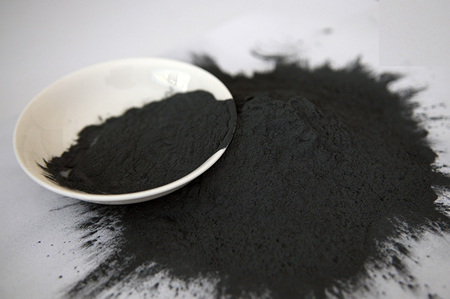
Sic particle reinforced al-matrix composite whose price is low, can be manufactured in the general method for mass production. Research and development of low cost and good effect preparation technology are hot spot in the current field of materials.

Compared with the traditional metal materials, particle reinforced al-matrix composite not only have the high plasticity and high toughness of metal and high modulus and high hardness of the reinforcing particles, but also is isotropic. This material has wide application prospect. Silicon carbide (Sic) particle reinforced al-matrix composite can be used to manufacture satellites and aircraft structural materials, such as satellite stents, fittings, all kinds of profile structure, missile wing, guidance components and spare parts for the airplane. This kind of material has important strategic significance.
Sic particle reinforced al-matrix composite whose price is low, can be manufactured in the general method for mass production. Research and development of low cost and good effect preparation technology are hot spot in the current field of materials.
A. The powder metallurgy method:
Powder metallurgy method has some special advantages. For example, it can accurately control component ratio, and the particle size of reinforcing particles in the nanometer range is adjustable. In addition, the sintering temperature of powder metallurgy process is lower, which can effectively reduce harmful interface reaction between reinforcing body and matrix. The obtained composite material has good mechanical properties. DWA Company in the United States adopted the mechanical alloying powder metallurgy method and produced the sic particle reinforced al-matrix composite, which has been applied to automobiles, aircraft, spacecraft, etc.
B. The pressure casting process:
This method is to fill the liquid or semi-liquid metal matrix composites or metal into cavity die casting model at a certain speed, and make it solidification under pressure, for final metal matrix composites, including the methods of squeeze casting, centrifugal casting, the gas pressure infiltration casting method, etc. At present, the squeeze casting process is widely used in the production application, whose specific steps are: First of all, the sic particle reinforced phase should be bonded to make precast block in the appropriate adhesive, and then put into the mould, pouring into the refined aluminum substrate metal melt, and immediately pressurize to make the molten metal melt impregnation the precast block. Finally, sic particle reinforced al-matrix composite is made after solidification. The main advantages of pressure casting process are: It can be produced in large quantities of spare parts of the particle reinforced al-matrix composites, and the cost is low; When impregnation, the melt and reinforced material has short contact time in high temperature, which avoids the negative impact of the interfacial reaction products for composite materials; High pressure effect promotes the melt wetting for reinforced material, so it doesn’t need surface pretreatment; It has compact structure and no pores.
C. The spray deposition method:
This method is to make the liquid metal atomized under high pressure, and inject the reinforced particle into the metal liquid when it flows out. Finally, the mixture of atomized liquid deposits and takes shape in the container. Spray deposition uses the matrix of different shapes and different ways of substrate movement that can obtain billet, cylindrical blank and other products. It can directly make it form the billet from liquid metal atomization and deposition with rapid solidification microstructure and property characteristics, which ensures the uniformity of the distribution of reinforced particles in the matrix; The cooling speed is fast, which avoids the interface reaction between the reinforcing particles and metal matrix; it doesn’t have high requirements for the wettability of interface, and the grain size is very small.